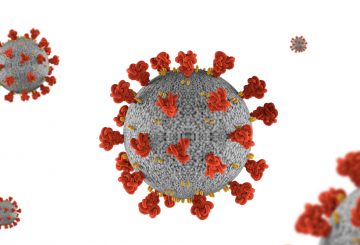Cựu Thủ tướng Sir John Key tin rằng chính phủ cần phải lấy ra sổ séc của mình, hơn là dựa vào chiến thuật sợ hãi để được người dân tiêm phòng.
Sir John – người từng là Thủ tướng từ năm 2008 đến năm 2016 – cho rằng tiêm chủng là cách duy nhất để trở lại bình thường mà người New Zealand có thể đi du lịch ra nước ngoài và trở về khi họ muốn.
Ông nói rằng động cơ khuyến khích mọi người để có được đâm là con đường tốt nhất về phía trước.
“Bạn phải di chuyển đến một loạt các cà rốt và gậy. Tôi không nghĩ rằng nỗi sợ sẽ có tác dụng.
“Lăn Shaun Hendy và nói rằng 7000 người có thể chết sẽ không có tác dụng.
“Sợ hãi làm việc với tiêm chủng theo ý kiến của tôi, nó không làm việc với những người chưa được tiêm chủng.
“Nếu bạn đi và có một cái nhìn vào các gói thuốc lá và những hình ảnh khủng khiếp của các cơ quan của người dân được chứng minh trên những – tôi không nghĩ rằng đó thực sự là những gì ngăn chặn mọi người hút thuốc. Tôi nghĩ đó là lúc giá đi lên và khi bạn bị từ chối khả năng hút thuốc tại các địa điểm công cộng.”
Sir John nói rằng các lựa chọn có thể bao gồm cung cấp tiền thưởng cho những người tiêm chủng đến những khu vực khó tiếp cận hoặc trả tiền cho mọi người để được tiêm chủng.
Ông cho biết khi khóa cửa đã tốn một tỷ đô la một tuần, sẽ không phải là bất hợp lý nếu đưa ra một động lực 500 đô la cho những người trẻ tuổi để được tiêm chủng.
Sir John cũng tin rằng những người không được chủng ngừa nên bị cấm khỏi các địa điểm được cấp phép như nhà hàng, quán bar và câu lạc bộ đêm và thậm chí cả các chuyến bay của Air New Zealand.
“Và khá nhanh, tôi nghĩ bạn sẽ thấy rằng những người trẻ tuổi đó, phần lớn là những người không được tiêm chủng, sẽ nhanh chóng được tiêm chủng hoặc lối sống của họ sẽ thay đổi đáng kể.”
Sir John đã viết một bài xã luận đăng trên cả tờ báo Herald trên các báo Sunday Star-Times ngày nay và Sunday, trong đó ông kêu gọi một “kế hoạch mạch lạc” được chia sẻ với công chúng và nói rằng chính phủ nên “ngừng cầm quyền bởi sự sợ hãi.”
“Mục đích không còn là để tồn tại trong một vương quốc ẩn sĩ nhút nhút nhút nhút nhút”, Ngài John viết.
Trong chương trình Q+A của TVNZ sáng Chủ nhật, Bộ trưởng Phản ứng Covid-19 Chris Hipkins đã đưa ra những nhận xét của Sir John.
“Tôi nghĩ đó là một phần chính trị tuyệt vời,” Hipkins nói. “Nhiều điều mà John Key đang tranh cãi đã xảy ra.
“Tôi thực sự không đồng ý với ông mô tả New Zealand là một vương quốc ẩn sĩ tự mãn.
“Tôi nghĩ đó là một sự xúc phạm đối với người New Zealand, những người đã thực sự đạt được một số tỷ lệ tự do cao nhất trên thế giới bằng cách đi khó khăn và đi sớm khi chúng ta cần.”
Trong bài xã luận của mình, Sir John phê bình các yêu cầu phân bổ MIQ và nói rằng người New Zealand nên được thông báo khi nào biên giới sẽ mở cửa.
Ông cũng kêu gọi ưu đãi tài chính cho các nhà cung cấp y tế Māori và Thái Bình Dương dựa trên tỷ lệ tiêm chủng và 25 chứng từ cho những người từ 12-29 tuổi nếu họ được tiêm chủng trước ngày 1 tháng 12.






























































